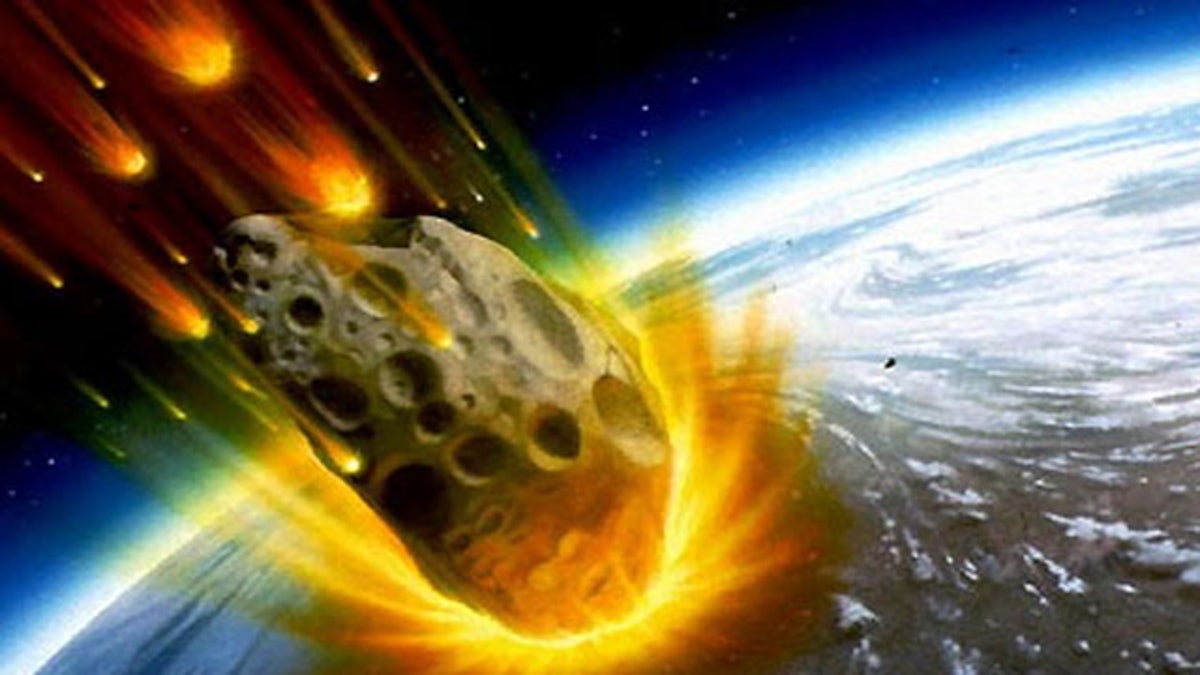
An artist's impression of an asteroid about to smash into the Earth. (AP)
New research challenges the idea that the asteroid impact that killed the dinosaurs also sparked a global firestorm.
Scientists modeled the effect that sand-sized droplets of liquefied rock from the impact had on atmospheric temperature. The asteroid is thought to have gouged out the Chicxulub crater on the Yucatán Peninsula in Mexico.
It was previously thought that the falling spherules, as the tiny rocks are called, heated up the atmosphere by several degrees for up to 20 minutes — hot enough and long enough to cause whole forests to spontaneously burst into flames.
As evidence for this, scientists pointed to what appears to be carbon-rich soot from burned trees discovered in the thin band of debris dating back to the impact some 65 million years ago, a shift in geologic time called the K-T boundary.
A new theory
But a new computer model, detailed in a recent issue of the journal Geology, suggests that the first barrage of falling spherules coalesced into a descending opaque cloud about 40 miles (70 km) above the Earth's surface, shielding our planet (and the dinosaurs) from the heat of spherules raining down from above.
"As more and more spherules are injected into the upper atmosphere, the cloud of settling spherules becomes thicker and denser," study team member Tamara Goldin of the University of Vienna told SPACE.com.
"So previously entered spherules help to shield the ground of some fraction of the thermal radiation from the subsequently entering spherules."
This "self-shielding" may have prevented global wildfires and limited other environmental effects from the impact, Goldin said.
The Earth's atmosphere likely did heat up, Goldin said, but the temperature increase may not have been as dramatic or as long-lasting as previously estimated.
"If you were on the ground, it would feel at the maximum like you're under a broiler in your oven," she said. "It would not be very comfortable, but it would not be instant immolation."
Burning oil
So if burning forests didn't create the K-T boundary soot, what did?
Some scientists have suggested the soot might have been caused by the burning of petroleum in the rocks of the Chicxulub impact site when the asteroid struck. "We know it's a pretty oil-rich area today," Goldin said.
She added that even if the Chicxulub impact didn't cause trees to catch fire worldwide, it almost certainly triggered other environmental catastrophes that contributed to the dinosaurs' demise, such as global dimming and acid rain.
"Just because we didn't have a global firestorm doesn't mean that Chicxulub is not the cause of the [dinosaurs'] extinction," she said.




















